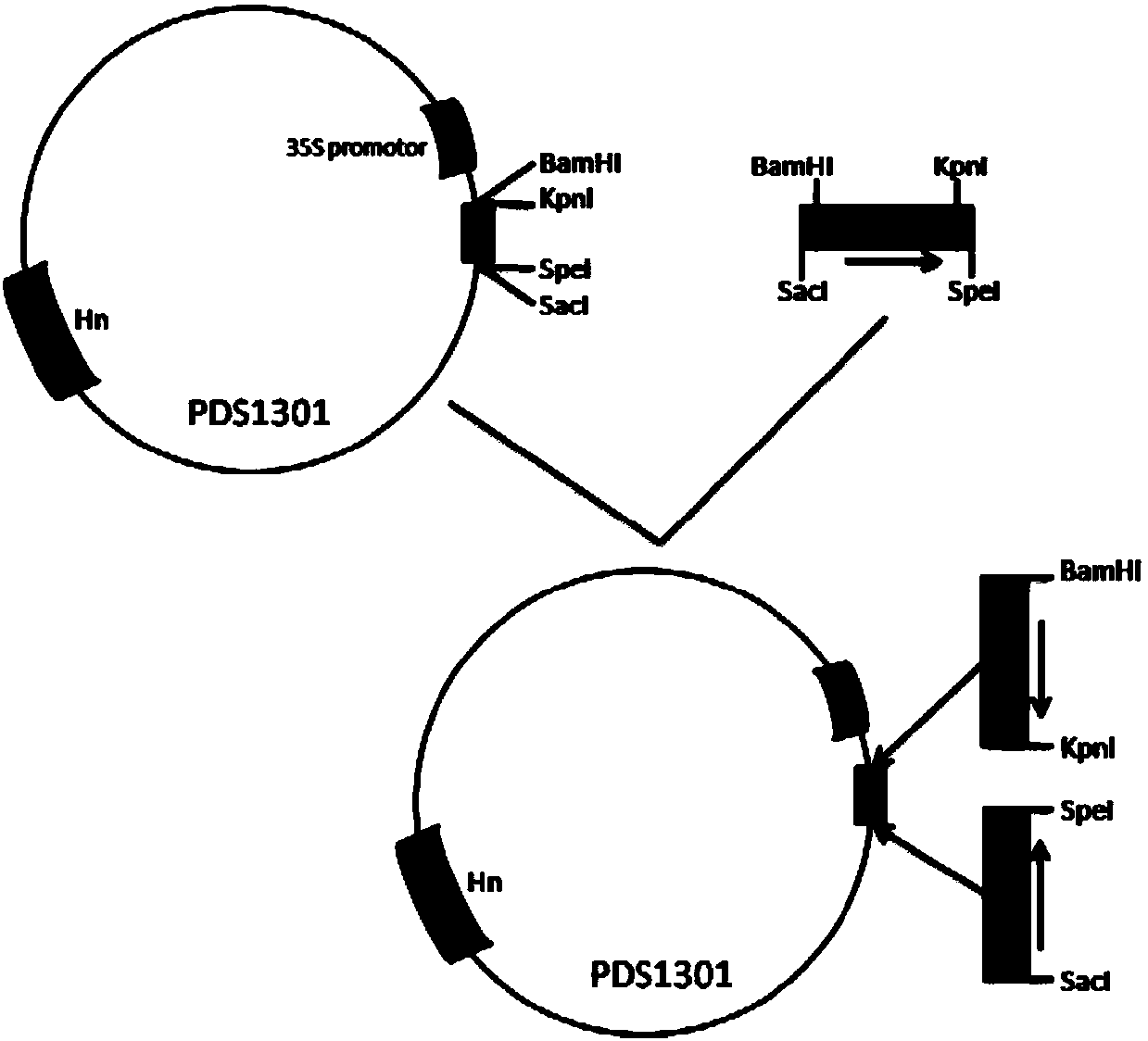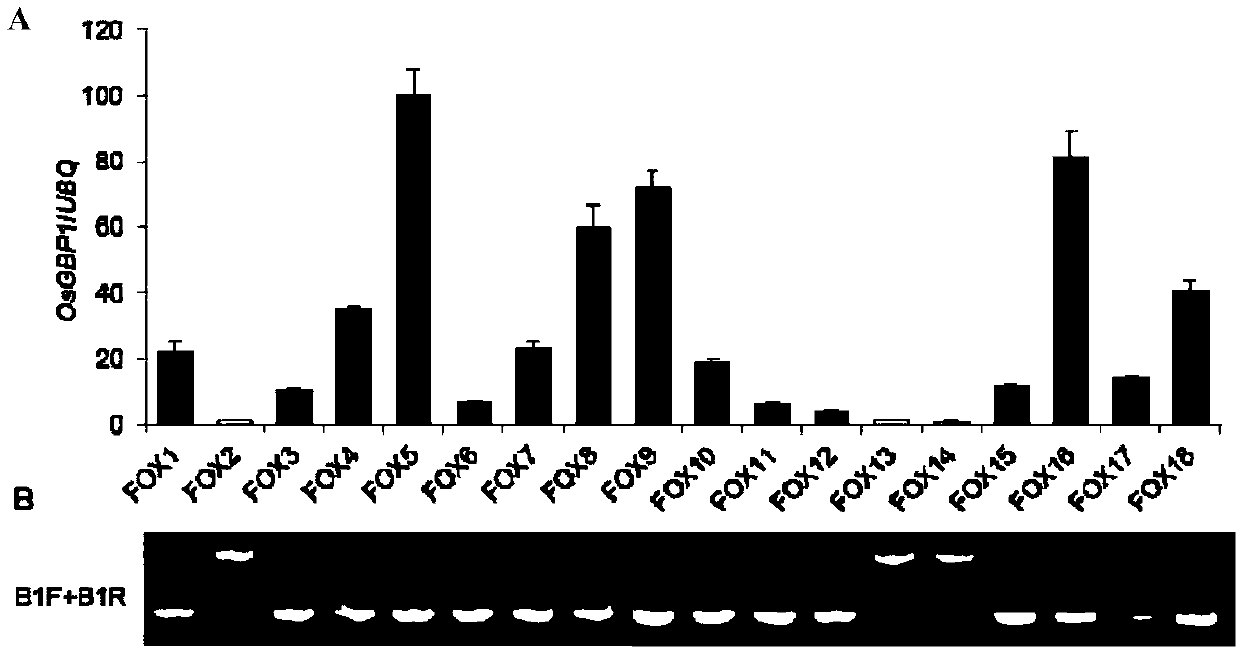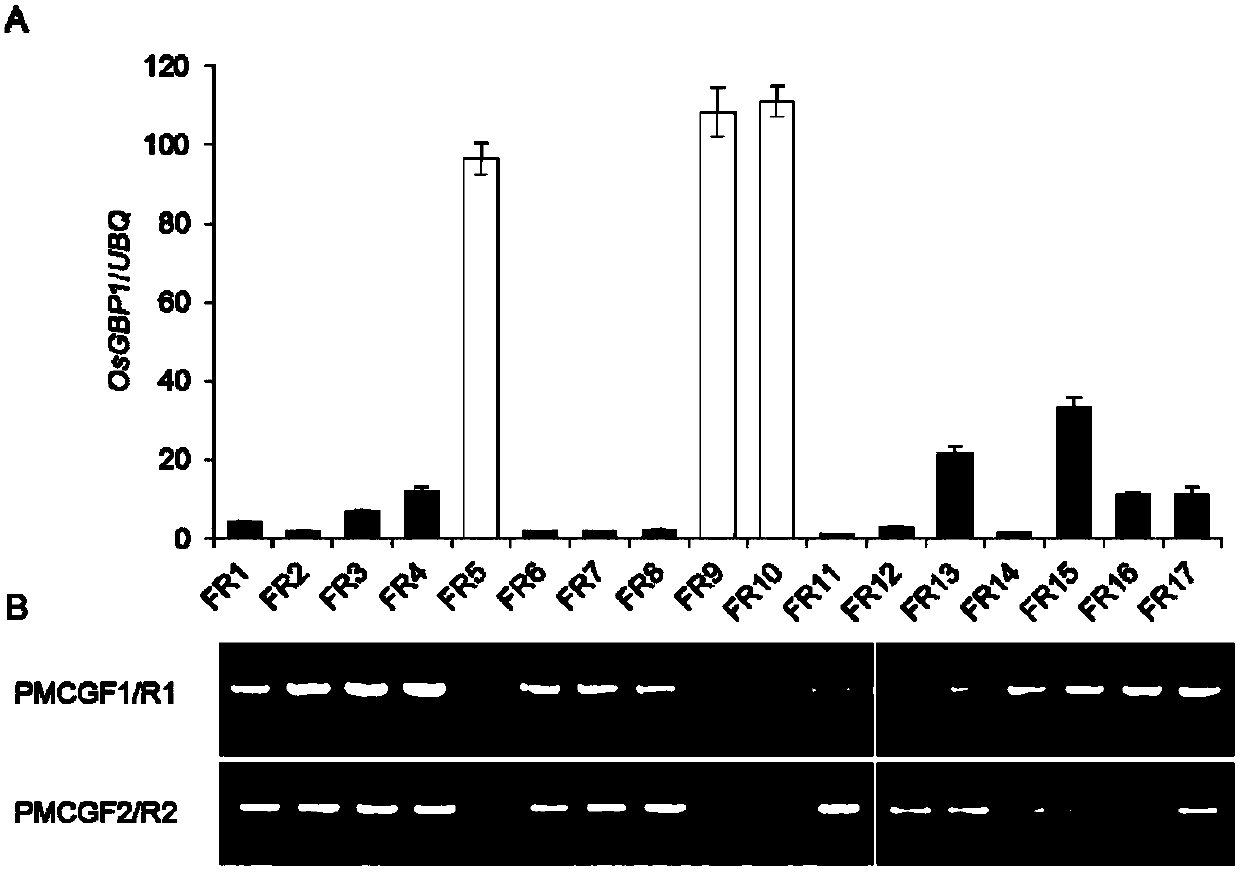Application of OsGBP1 gene to regulation and control on rice flowering and grain types
A gene and rice technology, applied in the application field of OsGBP1 gene in regulating the flowering and grain shape of rice, can solve the problems of affecting yield potential, affecting rice plant height and yield, etc., and achieve the effect of reducing grain length and promoting plant growth.
- Summary
- Abstract
- Description
- Claims
- Application Information
AI Technical Summary
Problems solved by technology
Method used
Image
Examples
Embodiment 1
[0131] Cloning of Example 1 Gene OsGBP1
[0132] Extract the DNA of rice variety Nipponbare (primer sequence: upstream primer 5′-AGCCTCTGGATCATTCGC-3′ and downstream primer 5′-GGCAAATGGCCTCTTCGA-3′) for polymerase chain reaction (PCR), and sequence the obtained PCR product to obtain the gene The gene sequence of OsGBP1 consists of 6040 bases, and the nucleotide sequence is shown in SEQ ID NO:1. PCR program: pre-denaturation at 94°C for 5 minutes; 35 cycles (denaturation at 94°C for 30 seconds; annealing at 55°C for 30 seconds; extension at 72°C for 6 minutes), and extension at 72°C for 10 minutes. RNA was extracted from the leaves of rice variety Nipponbare, reverse-transcribed into cDNA, and polymerase chain reaction (PCR) was performed with primers (primer sequence: upstream primer 5′-GGTACCCCTCTCCACCCCCAACA-3′ and downstream primer 5′-GGATCCCTACCGGATGGTGATGTACCG-3′) , the size of the amplified product is 1095bp (containing 99bp 5' non-coding sequence), and the obtained PCR...
Embodiment 2
[0134] The construction of embodiment 2 recombinant vector and the establishment of transformed agrobacterium
[0135] (1) The sequence containing the OsGBP1 gene CDS (SEQ ID NO: 2) amplified in Example 1 was double-digested with Kpn I and BamH I, and the target product was separated and recovered, and then digested with Kpn I and BamH I. The pCAMBIA1301S vector was ligated with T4 ligase to form an overexpression vector. The above primers were synthesized by Shanghai Sangong, and the restriction enzymes BamH I, Kpn I and T4 ligase were purchased from Takara Company.
[0136] (2) According to figure 1 The vector construction technical route of using the Nipponbare leaf cDNA obtained in Example 1 as a template with primers (primer sequence: upstream primer 5'-AAAGAGCTCGGATCCGCTTCGCCAATGCTACAA-3' and downstream primer 5'-AAAACTAGTGGTACCTGATCTTCCCCATCTTTCC-3') to carry out polymerase chain reaction (PCR) to isolate a 303-base cDNA fragment of the gene OsGBP1, the sequence of wh...
Embodiment 3
[0139] Example 3 Agrobacterium-mediated genetic transformation
[0140] (1) Induction: Shell the seeds of mature rice varieties (Zhonghua 11 and Nipponbare), and then treat them with 75% volume ratio of ethanol for 1 minute, and 0.15% concentration of mercury chloride (HgCl 2 ) Disinfect the surface of the seeds for 18 minutes; wash the seeds 4-5 times with sterilized water; place the seeds on the japonica rice induction medium; place the inoculated medium in a dark place for 4 weeks at a temperature of 25±1°C.
[0141] (2) Subculture: select bright yellow, compact and relatively dry embryogenic calli, put them on the japonica rice subculture medium and culture them in the dark for 2-3 weeks at a temperature of 25±1°C.
[0142] (3) Agrobacterium culture:
[0143] In the LA medium with kanamycin resistance (product of Shanghai Shenggong Company) selected (the preparation of LA medium can refer to J. Science Press, 2002) to pre-culture Agrobacterium strains FOX and FR for two ...
PUM
 Login to View More
Login to View More Abstract
Description
Claims
Application Information
 Login to View More
Login to View More - R&D
- Intellectual Property
- Life Sciences
- Materials
- Tech Scout
- Unparalleled Data Quality
- Higher Quality Content
- 60% Fewer Hallucinations
Browse by: Latest US Patents, China's latest patents, Technical Efficacy Thesaurus, Application Domain, Technology Topic, Popular Technical Reports.
© 2025 PatSnap. All rights reserved.Legal|Privacy policy|Modern Slavery Act Transparency Statement|Sitemap|About US| Contact US: help@patsnap.com



